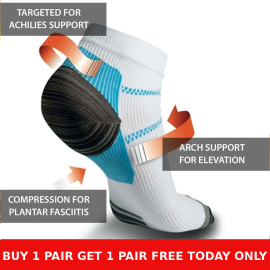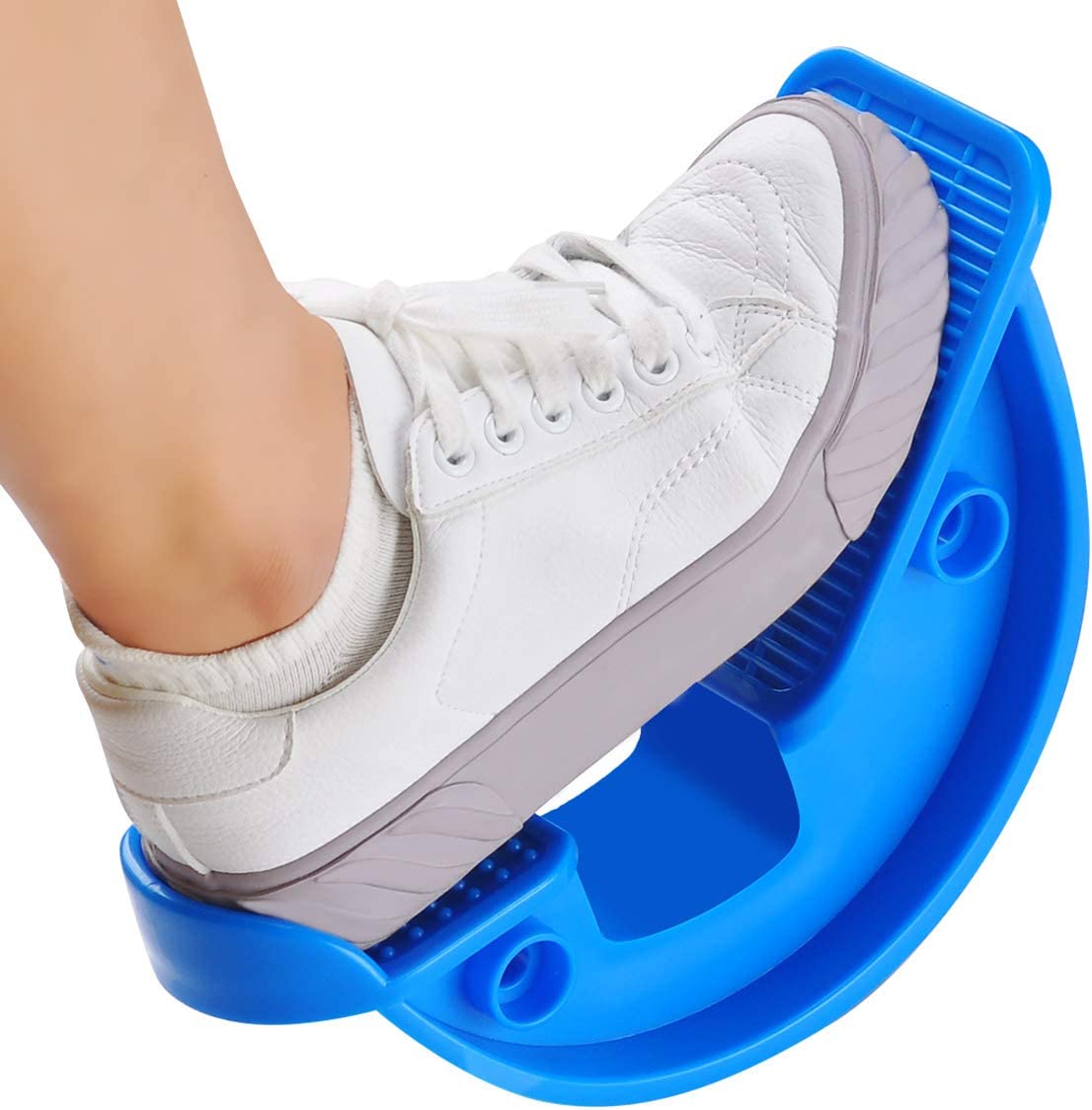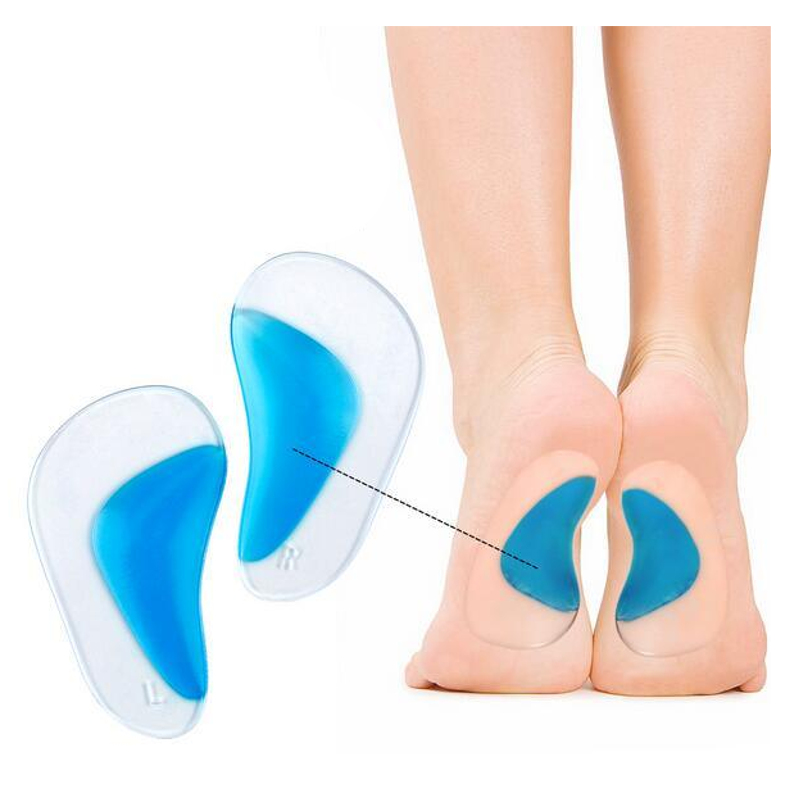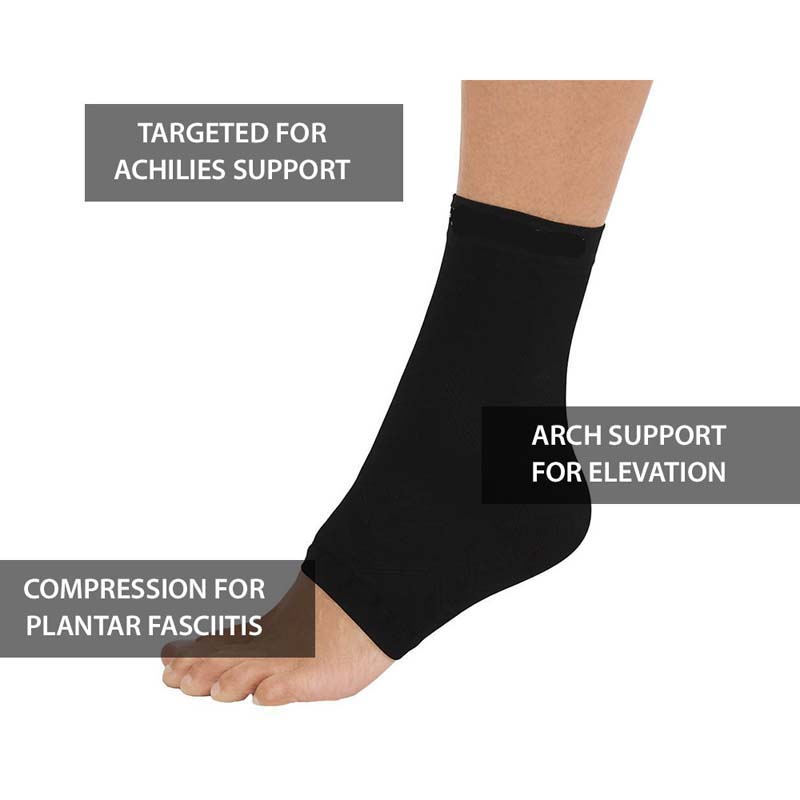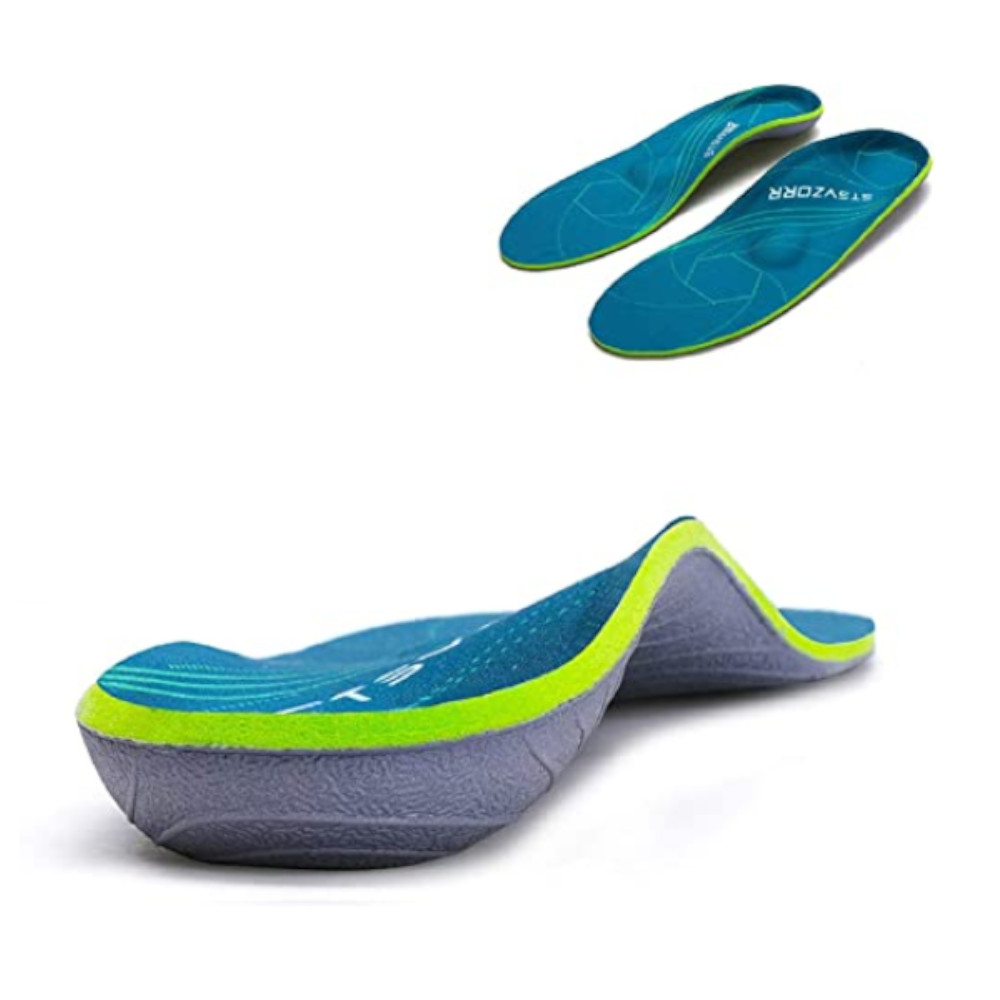Plantar Fasciitis vs Heel Spurs - Understanding the Difference

Featured Products for Plantar Fasciitis Foot Pain Relief
Heel pain can arise from various conditions, with plantar fasciitis and heel spurs being common culprits. While these terms are often used interchangeably, they refer to distinct conditions that can coexist or occur independently. In this blog post, well unravel the differences between plantar fasciitis and heel spurs, shedding light on their causes, symptoms, and treatment approaches.
Plantar Fasciitis:
-
Causes:
- Plantar fasciitis is primarily characterized by inflammation of the plantar fascia, a thick band of tissue that connects the heel bone to the toes. It is often caused by overuse, improper footwear, or issues with foot mechanics, leading to strain and microtears in the plantar fascia.
-
Symptoms:
- The hallmark symptom is a sharp pain at the bottom of the heel, especially during the first steps in the morning or after periods of rest. The pain may improve with activity but can return after prolonged standing or intense exercise.
-
Diagnosis:
- Diagnosis is typically based on a clinical examination, medical history, and imaging studies, such as X-rays or ultrasound, to rule out other conditions.
-
Treatment:
- Treatment for plantar fasciitis often involves a combination of rest, stretching exercises, supportive footwear, orthotic inserts, and, in some cases, anti-inflammatory medications or physical therapy.
Heel Spurs:
-
Causes:
- Heel spurs are bony protrusions that form on the underside of the heel bone. They often develop as a response to long-term plantar fasciitis, where the continuous pulling of the plantar fascia on the heel bone triggers the growth of a spur.
-
Symptoms:
- Heel spurs themselves may not cause pain. The associated pain is typically due to inflammation of the surrounding tissues, especially the plantar fascia. Individuals with heel spurs may experience pain similar to that of plantar fasciitis.
-
Diagnosis:
- Like plantar fasciitis, the diagnosis of heel spurs is often made through imaging studies, such as X-rays. However, its crucial to note that the presence of a heel spur does not necessarily indicate pain.
-
Treatment:
- Treatment for heel spurs focuses on addressing the underlying cause, often plantar fasciitis. Management includes similar approaches to plantar fasciitis, such as rest, stretching, supportive footwear, and orthotic inserts. In severe cases, surgical intervention may be considered.
Key Differences:
-
Nature of Condition:
- Plantar fasciitis is primarily an inflammatory condition of the plantar fascia, while heel spurs are bony outgrowths that may or may not cause pain.
-
Pain Location:
- Pain in plantar fasciitis is typically localized at the bottom of the heel, while heel spur pain, if present, may be more generalized and associated with inflammation.
-
Diagnosis:
- Diagnosing plantar fasciitis involves assessing inflammation in the plantar fascia, whereas heel spurs are diagnosed through imaging studies that reveal the presence of a bony protrusion.
-
Treatment Approach:
- Treatment for both conditions often overlaps, with a focus on relieving inflammation, managing symptoms, and addressing the underlying causes. Surgical intervention is more commonly associated with severe cases of heel spurs.
Conclusion:
Understanding the distinctions between plantar fasciitis and heel spurs is crucial for accurate diagnosis and effective treatment. Whether its inflammation of the plantar fascia or the presence of heel spurs, early intervention and comprehensive care can contribute to a more comfortable and active lifestyle.
Featured Products for Plantar Fasciitis Foot Pain Relief
Latest Blogs
- Taking a Stand Against Heel Pain: Practical Solutions
- Happy Heels, Happy Life: Banishing Foot Pain for Good
- The Road to Relief: Strategies for Combating Heel Pain
- Heel to Toe Wellness: Tackling Foot Pain Head-On
- Foot Pain Decoded: Understanding the Signals Your Feet Send
- Soothing Steps: Natural Remedies for Heel and Foot Pain
- Putting Your Best Foot Forward: Managing Heel Discomfort
- The ABCs of Happy Feet: Beating Heel and Foot Pain
- From Heel to Toe: Navigating Common Foot Pain Issues
- Taking a Step Back: Causes and Remedies for Heel Pain
- Footloose and Pain-Free: Tips for Happy Heels and Feet
- Soleful Solutions: A Guide to Alleviating Heel and Foot Discomfort
- Stepping Into Comfort: Understanding Heel and Foot Pain
- From Pain to Progress: Inspiring Plantar Fasciitis Journeys
- Living a Full Life with Plantar Fasciitis: Success Stories
- Plantar Fasciitis and Exercise: Finding the Right Balance
- The Impact of Stress on Plantar Fasciitis Symptoms
- Plantar Fasciitis: When to Seek Professional Help
- Inflammatory Foods and Plantar Fasciitis: What to Avoid
- Ergonomics and Plantar Fasciitis: A Comprehensive Guide
- The Importance of Rest in Plantar Fasciitis Recovery
- Traveling with Plantar Fasciitis: Tips for Happy Feet
- Plantar Fasciitis and Your Sleep: Improving Rest Quality
- The Psychological Aspect of Living with Plantar Fasciitis
- Plantar Fasciitis and High-Impact Activities: Navigating Risks
- How to Stay Active with Plantar Fasciitis: Practical Tips
- Plantar Fasciitis and Aging: Strategies for Seniors
- Cryotherapy for Plantar Fasciitis: Icy Relief for Your Feet
- Aquatic Exercise for Plantar Fasciitis: Dive into Healing
- Mindfulness and Meditation for Plantar Fasciitis Relief
- Heel Pain 101: A Guide to Plantar Fasciitis
- Finding Relief - Plantar Fasciitis Home Remedies
- The Emotional Toll of Chronic Plantar Fasciitis
- Post-Workout Foot Care for Plantar Fasciitis Sufferers
- DIY Foot Massage Techniques for Plantar Fasciitis
- From Diagnosis to Recoveryc- Navigating Plantar Fasciitis
- Plantar Fasciitis in Children Signs and Solutions
- Plantar Fasciitis and Weight: Impact on Foot Health
- How Nutrition Affects Plantar Fasciitis Recovery
- Yoga for Plantar Fasciitis: Poses for Pain Relief
- Breaking Down Plantar Fasciitis Myths and Misconceptions
- Plantar Fasciitis Stretches - Daily Routine for Relief
- The Link Between Plantar Fasciitis and Flat Feet
- Plantar Fasciitis in Pregnancy - What to Expect
- Desk Job Dilemma - Coping with Plantar Fasciitis at Work
- Plantar Fasciitis in Athletes Strategies for Recovery
- Massage and Plantar Fasciitis A Soothing Combination
- Plantar Fasciitis at Night: Tips for Better Sleep
- Plantar Fasciitis vs Heel Spurs - Understanding the Difference
- The Role of Stretching in Plantar Fasciitis Recovery
- Running with Plantar Fasciitis: Dos and Donts
- Preventing Plantar Fasciitis: Tips for Foot Health
- Natural Remedies for Plantar Fasciitis You Havent Tried
- Heel Pain Demystified: Plantar Fasciitis Explained
- Best Shoes for Plantar Fasciitis: A Comprehensive Guide
- Managing Plantar Fasciitis Pain: Tips and Tricks
- The Complete Guide to Plantar Fasciitis Treatment Options
- 10 Effective Exercises for Plantar Fasciitis Relief at Home
- Understanding Plantar Fasciitis: Causes and Symptoms
- Why do I get Pain in My Feet at Night
- Is pain in your feet a sign of diabetes
- What causes pain in my feet
- Plantar Fasciitis - Why so Painful
- What is that pain in my heel
- Should I Walk with Foot Pain
- How to Treat Ankle Pain
- 10 Best Exercises of Plantar Fasciitis
- Do Compression Socks Help Foot Pain
- Do Insoles Work for Foot Pain
- Best Stretches for Plantar Fasciitis
- 5 Causes of Plantar Fasciitis
- Do Back Posture Braces Actually Work
- Foot pain from walking
- Best Insoles for Plantar Fasciitis
- Pain in heel of foot after Running
- Treatment for Pain in arch of foot
- Pain on top of foot
- Mortons neuroma treatment
- How to remove an Ingrown Toenail
- Foot Heel Spur Pain
- Sore Foot in the Morning
- Suffer Heel Pain in the Morning ?
- Start a running routine
- Running through Fatigue
- Best Achilles Tendonitis and Ankle Excercises
- Causes of Achilles Tendonitis and Ankle Pain
- Plantar Fasciitis Cure and Treatment
- Best Plantar Fasciitis Products
- Causes of Plantar Fasciitis and Heel Spur Pain
- Best Plantar Fasciitis Excercises


